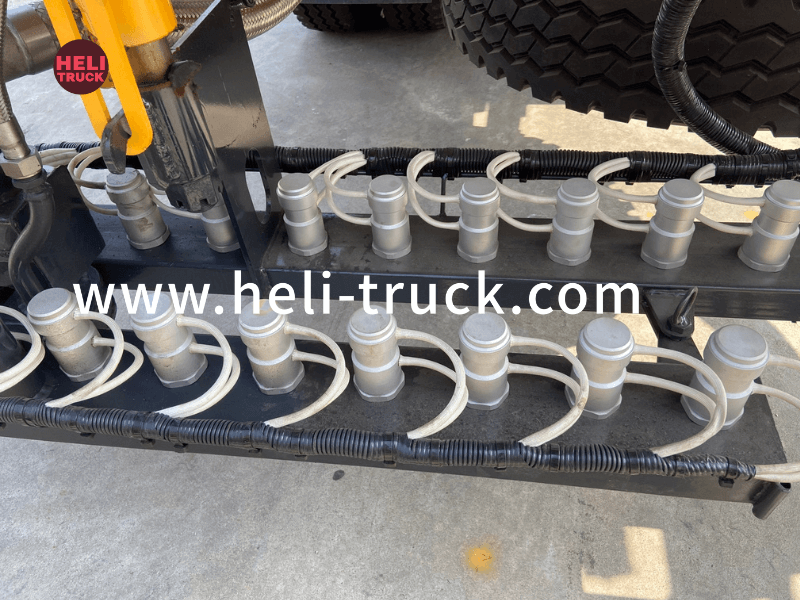Introduction
Garbage compactor trucks play a crucial role in waste management systems, helping to efficiently collect and compress waste for transportation and disposal. These specialized vehicles come in various sizes and configurations, each offering unique features and capabilities to suit different operational needs. In this article, we will compare the key features of different garbage compactor trucks to help you make an informed decision when selecting the right vehicle for your waste management needs.
Types of Garbage Compactor Trucks
There are several types of garbage compactor trucks available in the market, each designed for specific applications and environments. The most common types of garbage compactor trucks include:
1. Rear Loader Compactor Trucks: These trucks feature a compactor mechanism at the rear of the vehicle, allowing waste collectors to load waste into the hopper from the back of the truck. Rear loader compactor trucks are commonly used for residential waste collection routes.
2. Front Loader Compactor Trucks: Front loader compactor trucks are equipped with a front-loading mechanism that allows waste collectors to pick up and empty large dumpsters into the hopper of the truck. These trucks are often used for commercial and industrial waste collection.
3. Side Loader Compactor Trucks: Side loader compactor trucks feature a loading mechanism on the side of the vehicle, allowing waste collectors to pick up and empty waste containers placed along the curbside. These trucks are ideal for narrow streets and areas with limited access.
Key Features to Consider
When comparing garbage compactor trucks, there are several key features to consider to ensure that the vehicle meets your operational requirements. Some of the essential features to evaluate include:
1. Compaction Ratio: The compaction ratio of a garbage compactor truck refers to the volume reduction achieved when compressing waste. A higher compaction ratio means that the truck can hold more waste before requiring emptying, leading to increased operational efficiency.
2. Capacity: The capacity of a garbage compactor truck determines the volume of waste it can hold before needing to be emptied. Different trucks come in varying capacities, ranging from small compactors for residential use to large trucks for commercial and industrial applications.
3. Loading Mechanism: The loading mechanism of a garbage compactor truck plays a crucial role in how efficiently waste can be collected and compacted. Rear loader trucks are suitable for residential areas, while front loader and side loader trucks are more appropriate for commercial and industrial settings.
4. Hydraulic System: The hydraulic system of a garbage compactor truck is responsible for powering the compactor mechanism and other moving parts of the vehicle. A robust hydraulic system is essential for smooth operation and reliable performance.
5. Controls and Automation: Modern garbage compactor trucks are equipped with advanced controls and automation features to streamline operations and improve efficiency. Features such as remote monitoring, compaction cycle control, and onboard diagnostics can enhance the overall performance of the vehicle.
Comparison of Top Garbage Compactor Truck Models
To provide a comprehensive comparison of garbage compactor trucks, let's take a closer look at some of the top models available in the market and their key features:
1. Model A: Rear Loader Compactor Truck
- Compaction Ratio: 3:1
- Capacity: 15 cubic yards
- Loading Mechanism: Rear loader
- Hydraulic System: Dual hydraulic pumps
- Controls and Automation: Basic control panel with manual operation
2. Model B: Front Loader Compactor Truck
- Compaction Ratio: 4:1
- Capacity: 30 cubic yards
- Loading Mechanism: Front loader
- Hydraulic System: High-pressure hydraulic system
- Controls and Automation: Advanced touchscreen control panel with programmable settings
3. https://www.heli-truck.com/howo-10cbm-garbage-compactor-truck/ : Side Loader Compactor Truck
- Compaction Ratio: 5:1
- Capacity: 20 cubic yards
- Loading Mechanism: Side loader
- Hydraulic System: Variable displacement hydraulic pump
- Controls and Automation: Remote monitoring and diagnostics system
Comparison of Features
- Compaction Ratio: Model C offers the highest compaction ratio, making it more efficient in reducing waste volume compared to Models A and B.
- Capacity: Model B has the largest capacity, making it suitable for high-volume waste collection operations.
- Loading Mechanism: Each model has a different loading mechanism suited for specific applications, with Model C being ideal for curbside waste collection.
- Hydraulic System: Model B features a high-pressure hydraulic system, providing more power and efficiency compared to the hydraulic systems of Models A and C.
- Controls and Automation: Model B offers the most advanced controls and automation features, providing operators with greater flexibility and control over the compaction process.
Conclusion
Garbage compactor trucks are essential tools in waste management systems, helping to collect and compress waste efficiently for disposal. When comparing garbage compactor truck features, it is essential to consider factors such as compaction ratio, capacity, loading mechanism, hydraulic system, and controls and automation features to choose the right vehicle for your operational needs. By carefully evaluating these key features and comparing different models, you can select a garbage compactor truck that meets your requirements and enhances the overall efficiency of your waste collection operations.

